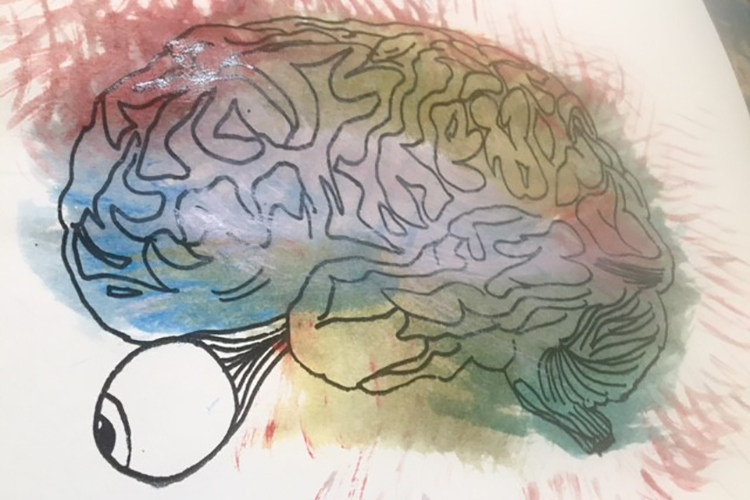
Neuronline Spotlight: Educating the Public About the Brain

Groups like NW Noggin, a neuroscience outreach program in the Pacific Northwest, bring brain science to the public through hands-on activities like art projects. Photo courtesy of NW Noggin.
During Brain Awareness Week this past March, the Dana Foundation, SfN members, and scientists around the world celebrated neuroscience research by educating and engaging the public about the wonders of the mind. SfN’s exclusive Neuronline resources can help keep this momentum going with plenty of ideas for conducting neuroscience outreach year-round. From choosing your target audience to selecting your research topics and presentation styles, public outreach provides scientists the opportunity to be creative and have fun.
The personal perspectives below share interesting approaches and advice for neuroscience outreach. Make sure to visit Neuronline for other members-only resources on outreach and communicating your science to lay audiences. You can also check out the BAW webinar on BrainFacts.org that features information on outreach activities for people of all ages.
Article: 5 Ways to Get Involved in Outreach
All you need to move your love of science out of the lab and into the public sphere is a desire to communicate your research and an outlet for doing so, says Leanne Boucher, an assistant professor of psychology at Nova Southeastern University. She suggests:
- Engaging children — Kids are the easiest audience because they are naturally curious. Simple activities such as playing games and doing arts and crafts can get them excited about the brain.
- Visiting nursing homes or retirement communities — Older citizens and retirees typically ask insightful questions that can help you see your science in new ways.
- Conducting demonstrations using materials in your lab — Boucher’s lab uses a portable EEG and EMG setup, connecting people to the machines and having them relax or build anxiety and then reviewing the results.
Webinar: Group Impact: Strategies for Maximizing Your Outreach
Local SfN chapters can facilitate meaningful outreach activities, as evidenced by the Greater New York City chapter (braiNY). The co-founder and leader of brainNY, Haung (Ho) Yu, recommends opportunities for chapters, such as:
- Connecting people and resources — Chapters can provide volunteers and participants with opportunities to discuss career goals, develop professional relationships, and learn about topics in the field.
- Providing organizational tools for academic institutions — This can include securing publicity and support for volunteers and assisting with the creation of outreach programs.
- Engaging people through a variety of communications— Newsletters, websites, emails, and social media, among others, have proved successful for braiNY.
Article: Bringing Communities Together Through Neuroscience and Art
It’s an incredibly rewarding experience to answer questions about the neuroscience of sleep and trauma at a center for homeless youth or develop an art exhibit to explain the neurophysiology of visual perception, according to representatives from a neuroscience outreach group called NW Noggin. Members explain that outreach helps students by:
- Broadening skills — Getting involved in outreach opportunities gives graduate students teaching experience.
- Gaining exposure — Undergraduates are curious about graduate opportunities in neuroscience. Working with graduate students on outreach teaches them about graduate school and about currently funded research.
- Building enthusiasm — Helping middle and high school students engage in science builds excitement about the brain and can enhance their interest in exploring research.


















